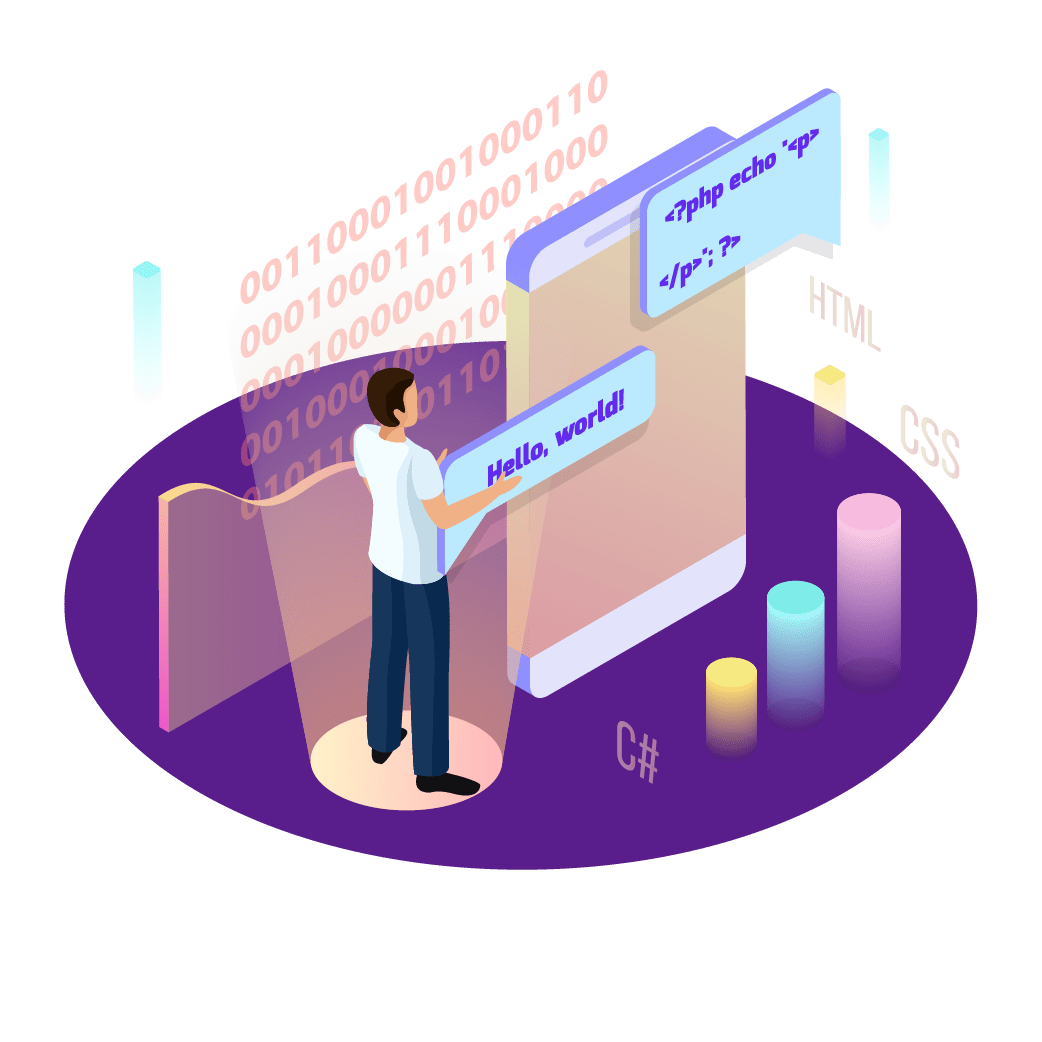In today’s digital world, software applications have become an essential part of our daily lives. They are used in various industries, including healthcare, finance, government, and many others. However, with the increasing use of software applications comes the risk of potential security threats. Hackers and cybercriminals are always looking for ways to exploit vulnerabilities in software applications for their malicious activities. This is where Binary Code Analysis comes into play.
BCA is a technique used to identify potential vulnerabilities in software applications by analyzing their binary code. This technique involves disassembling the binary code of a software application and analyzing its behavior. By analyzing the binary code of a software application, potential vulnerabilities can be identified, and necessary measures can be taken to mitigate the risks associated with security threats.
Securium Solutions is a leading Binary Code Analysis Company that provides comprehensive Binary Code Analysis Services to help businesses and organizations in securing their software applications. Our Services are designed to provide you with accurate and comprehensive results that help you identify potential vulnerabilities in your software applications and provide you with the necessary information to mitigate the risks.
At Securium Solutions, we have a team of experts with extensive experience in performing Services. We use cutting-edge tools and technologies to provide you with the most accurate results. Our methodology involves a comprehensive approach that includes code review, dynamic analysis, manual analysis, and reporting.
We support all widely used programming languages for Binary Code Analysis & Services, including C and C++, Java, Python, Ruby, .NET, and JavaScript. We also use a variety of Binary Code Analysis tools, including IDA Pro, Ghidra, and Binary Ninja, to provide you with accurate and comprehensive results.

Identify Potential Vulnerabilities: It is allows you to identify potential vulnerabilities in software applications that may be exploited by hackers and cybercriminals. By identifying these vulnerabilities, you can take the necessary measures to mitigate the risks associated with security threats.
Compliance Requirements: Compliance requirements such as PCI-DSS, HIPAA, and GDPR require organizations to secure their software applications. It is helps you identify potential vulnerabilities in your software applications, which allows you to meet compliance requirements.
Cost-Effective: It is a cost-effective technique to identify potential vulnerabilities in software applications. It helps you save time and money by identifying potential vulnerabilities before they are exploited by hackers and cybercriminals.
Improved Application Performance: It’s helps you identify potential performance issues in your software applications. By identifying these issues, you can take the necessary measures to improve the performance of your software applications.
Competitive Advantage: It is provides you with a competitive advantage by ensuring the security of your software applications. It helps you build trust with your customers by ensuring that their data is secure and protected from potential security threats.
Our Methodology
At Securium Solutions, we follow a comprehensive methodology for performing this. Our methodology involves the following steps:
Code Review: We start by reviewing the source code of the software application to understand its behavior and identify potential vulnerabilities.
Dynamic Analysis: We use dynamic analysis techniques to identify potential vulnerabilities in the software application while it is running. This involves analyzing the software application’s behavior during runtime and identifying any potential security threats.
Manual Analysis: We perform manual analysis to identify potential vulnerabilities that cannot be identified through automated tools. Our team of experts uses their extensive experience and knowledge to identify potential security threats that may be missed by automated tools.
Reporting: We provide a comprehensive report that includes a summary of our findings, potential vulnerabilities identified, and recommendations for mitigation.


Some of the widely used tools are:
IDA Pro: IDA Pro is a disassembler and debugger tool that is used to analyze binary code. It is a widely used tool in the security industry and provides a comprehensive analysis of binary code.
Binary Ninja: Binary Ninja is a disassembler and reverse engineering tool that is used to analyze binary code. It is a modern tool that provides a user-friendly interface and advanced features for analyzing binary code.
Ghidra: Ghidra is an open-source disassembler and decompiler tool that is used to analyze binary code. It is a powerful tool that provides a comprehensive analysis of binary code.
Radare2: Radare2 is an open-source disassembler and debugger tool that is used to analyze binary code. It is a powerful tool that provides advanced features for analyzing binary code.
Hopper Disassembler: Hopper Disassembler is a disassembler and debugger tool that is used to analyze binary code. It is a user-friendly tool that provides a comprehensive analysis of binary code.
C/C++: C/C++ is a widely used programming language for system-level programming. It is a compiled language and is used to develop software applications for operating systems, embedded systems, and other low-level software applications.
Java: Java is a popular programming language for developing web and mobile applications. It is a compiled language, and the compiled code is in the form of bytecode. It is Java applications involves analyzing the bytecode and identifying potential vulnerabilities.
.NET: .NET is a framework developed by Microsoft for developing software applications. It supports multiple programming languages, including C#, VB.NET, and F#. Binary code analysis of .NET applications involves analyzing the Intermediate Language (IL) code generated by the .NET compiler.
Python: Python is a high-level programming language that is widely used for scripting and automation. It is an interpreted language, but it can also be compiled into binary code. It is Python applications involves analyzing the bytecode generated by the Python compiler.
Go: Go is a programming language developed by Google for system-level programming. It is a compiled language, and the compiled code is in the form of binary code. Binary code analysis of Go applications involves analyzing the binary code and identifying potential vulnerabilities.


Byte Code Analysis involves analyzing compiled code of software applications written in programming languages that generate bytecode, such as Java and .NET. Bytecode is a low-level representation of the software application that is generated by the compiler.
Binary Code Analysis involves analyzing compiled code of software applications written in programming languages that generate binary code, such as C/C++, Go, and Rust. Binary code is the machine code that is generated by the compiler and can be executed directly by the computer’s processor.
Byte Code Analysis is generally easier to perform as bytecode is a higher-level representation of the software application than binary code. This makes it easier to analyze the software application for potential vulnerabilities.
Binary Code Analysis is more comprehensive, as it analyzes the actual machine code that is executed by the computer’s processor. This makes it more accurate in identifying potential vulnerabilities in the software application.
Byte Code Analysis is typically used for higher-level applications, such as web and mobile applications.
Binary Code Analysis is used for system-level applications.
Byte Code Analysis typically involves the use of tools such as Java Decompiler, JEB, and JadX. It also involves the use of techniques such as static analysis, dynamic analysis, and fuzz testing.
Binary Code Analysis involves the use of tools such as IDA Pro, Ghidra, and Binary Ninja. It also involves the use of techniques such as static analysis, dynamic analysis, and symbolic execution.
Bytecode is executed by a virtual machine, which translates it into machine code that can be executed by the computer’s processor.
Binary code can be executed directly by the computer’s processor.
Byte Code Analysis is less accurate than Binary Code Analysis as it analyzes a higher-level representation of the software application.
Binary Code Analysis is more accurate than Byte Code Analysis as it analyzes the actual machine code that is executed by the computer’s processor.


Cutting-Edge Technology: Leveraging advanced algorithms and machine learning, Securium Solution utilizes state-of-the-art techniques to analyze binary code with utmost precision.
Vulnerability Detection: By conducting in-depth analysis, Securium Solution quickly identifies potential vulnerabilities and weaknesses in binary code, enabling proactive threat mitigation.
Malware Detection: Through robust scanning and pattern recognition, Securium Solution effectively detects malicious code, safeguarding systems from harmful attacks and breaches.
Timely Insights: Securium Solution provides actionable insights and detailed reports, empowering developers and security teams to address issues promptly and ensure code integrity.
Seamless Integration: With its flexible integration options, Securium Solution seamlessly integrates into existing development workflows, minimizing disruption and maximizing productivity.
Here are some key security questions you need to ask when considering Binary Code Analysis services:
The cost of services varies depending on the size and complexity of the software application being analyzed. It’s important to get a clear understanding of the cost before starting the project to ensure that it fits within your budget.
The time it takes to complete depends on the size and complexity of the software application being analyzed. Typically, it can take anywhere from a few days to several weeks to complete the analysis. It’s important to get a clear understanding of the timeline before starting the project to ensure that it fits within your project deadlines.
At Securium Solutions, we support all widely used programming languages for Binary Code Analysis, including C, C++, Java, Python, and more. It’s important to ensure that the Binary Code Analysis company you choose supports the programming language(s) used in your software application.
At Securium Solutions, we use advanced tools such as IDA Pro, Ghidra, and Binary Ninja to ensure accurate and efficient analysis. It’s important to ensure that the Binary Code Analysis company you choose uses up-to-date tools and technologies to ensure accurate analysis.
At Securium Solutions, we provide a detailed report that outlines all potential vulnerabilities found in the software application. The report is presented in an easy-to-understand format, and our team is available to answer any questions you may have about the report.
Yes, at Securium Solutions, we understand the importance of confidentiality when it comes to Analysis. We ensure that all analysis reports are kept confidential and secure, and we only share the report with the client and their authorized representatives.
Yes, at Securium Solutions, we offer services that can be integrated into the software development lifecycle. This allows for ongoing monitoring and analysis of the software application, which can help prevent potential vulnerabilities from being introduced into the code.